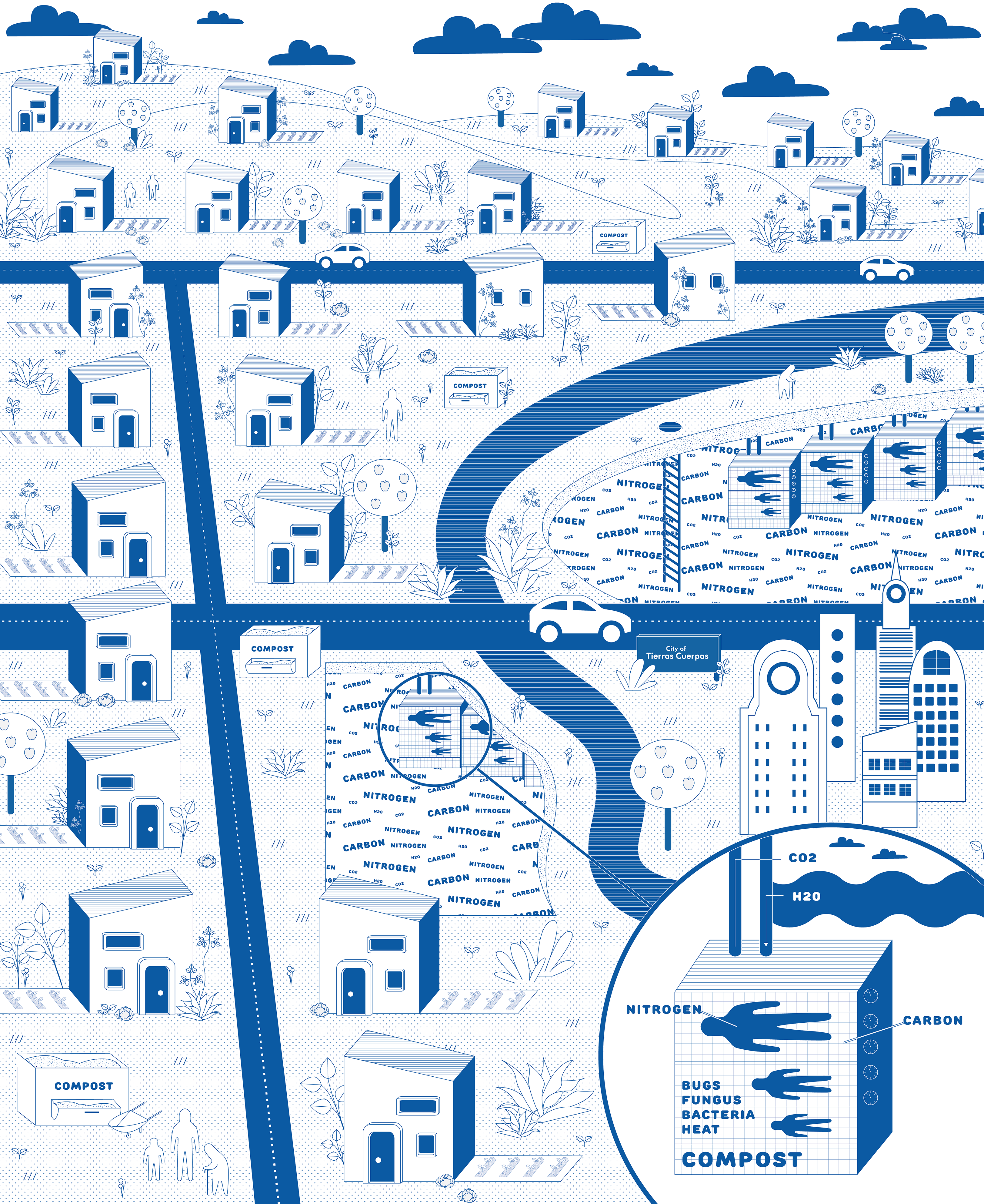Tierras Cuerpas
The City of Tierras Cuerpas (“Earth Bodies”) is a critical response to mainstream cultural behaviors surrounding death, and particularly how we construct semi-permanent sites of commemoration for our dead and literally on top of them: cemeteries, shrines, monuments, etc. The business of how we normally preserve and bury corpses is environmentally unsustainable and subconsciously death-denying. What might a more progressive mortuary system look like? In this imagined city, cadavers are interred to a network of subterranean composting cells and maintained by a specialized municipal labor team. The resulting compost is then used to support a city-wide urban farming initiative. The city is teeming with plant life and fresh, live produce free for the picking. Although this sort of mortuary infrastructure doesn’t actually exist at the municipal scale, “green funerals” do exist on the funerary market in the U.S. today. A green funeral is one in which the body is not embalmed and is interred in a simple, easily biodegradable casket or shroud to allow for natural decomposition. With that in mind, the system I imagine in Tierras Cuerpas is maybe more of a culturally radical speculation than a technologically radical one.
Client
student project
Year
2019
Services
design research, illustration
Collaborators
n/a
